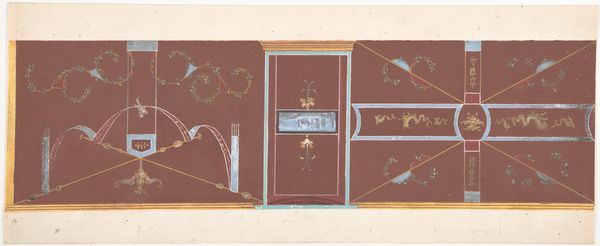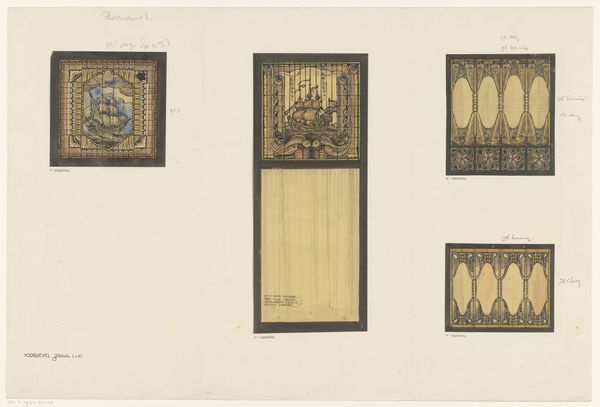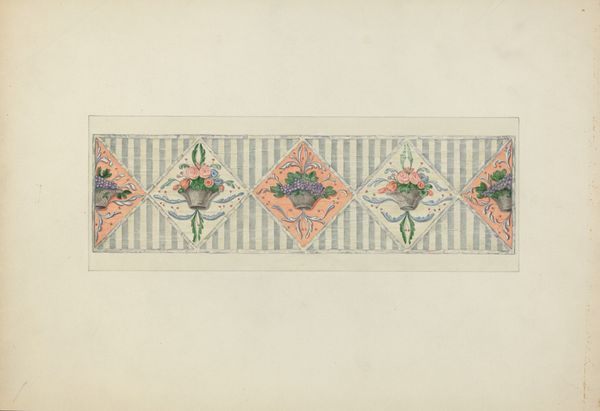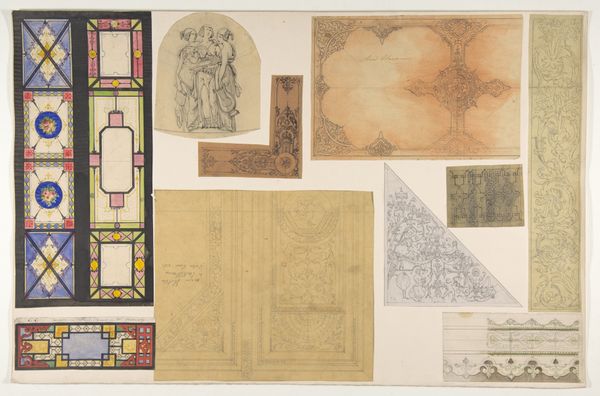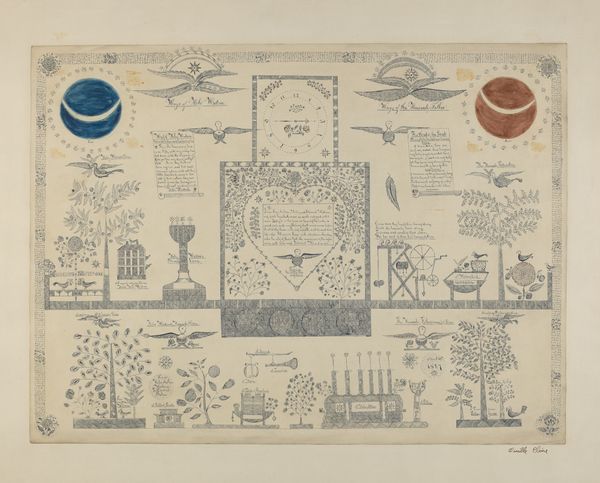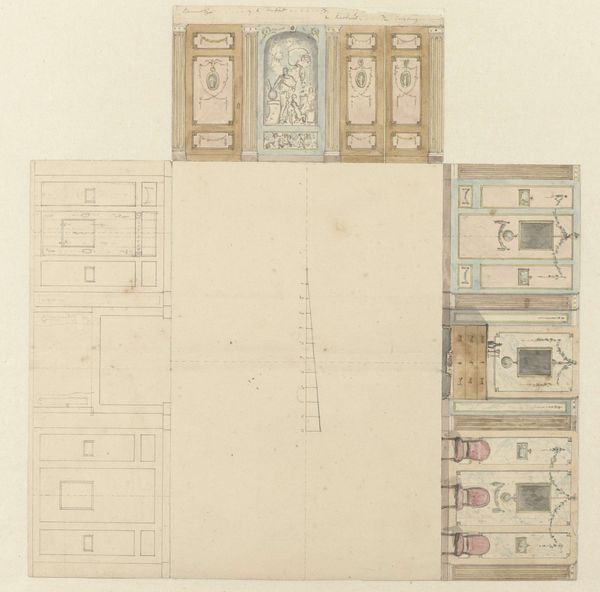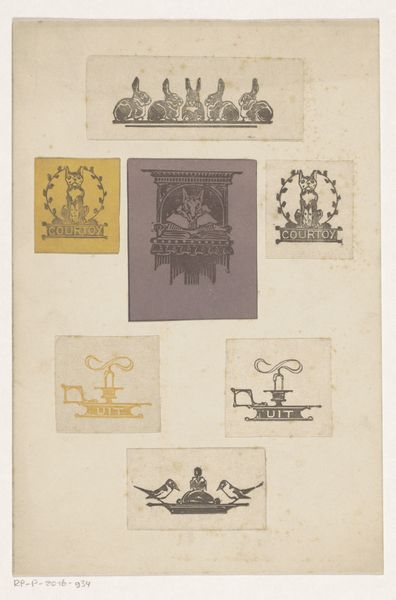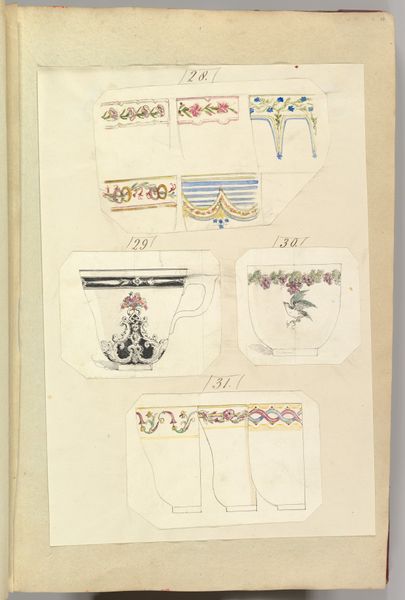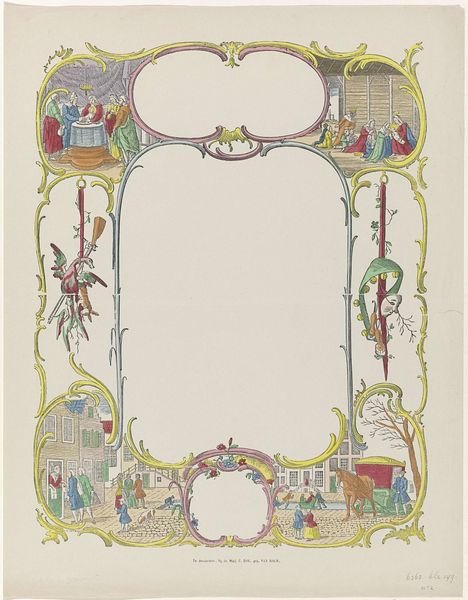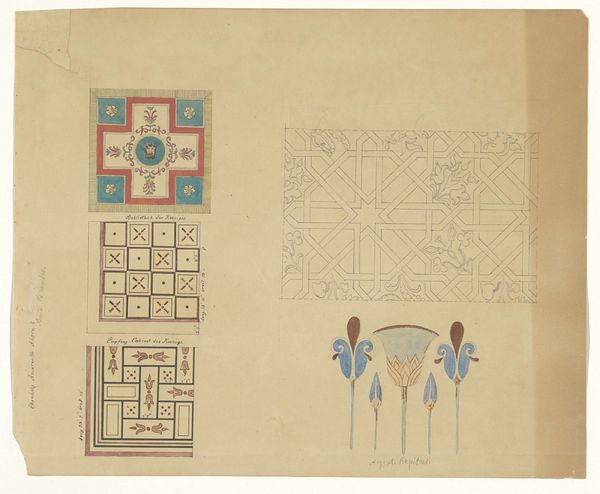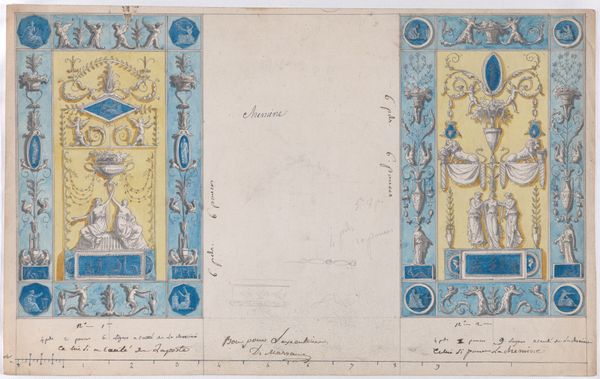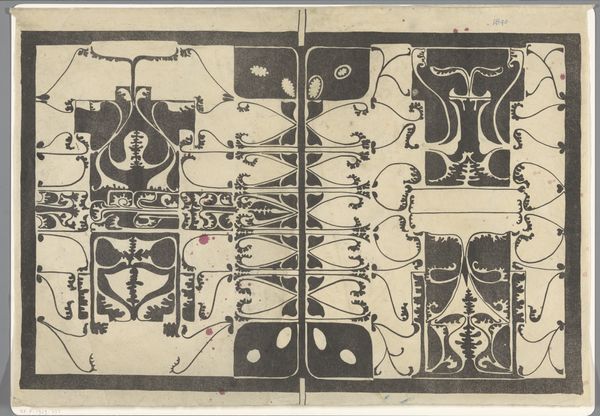
Dimensions: mount; actual: 46.3 x 64 cm (18 1/4 x 25 3/16 in.) actual: 38.6 x 53.7 cm (15 3/16 x 21 1/8 in.)
Copyright: CC0 1.0
Curator: This is Oskar Schlemmer's "Costume Designs for the 'Triadic Ballet'" from the early 20th century, housed here at the Harvard Art Museums. The designs are rendered on paper, a surprisingly flat surface for such sculptural aspirations. Editor: My first thought is: Constructivism meets Carnival! The geometric forms are playful, yet there's an underlying sense of the mechanical. Curator: Exactly. Schlemmer aimed to integrate man and machine. These costumes aren't just clothing; they're wearable architecture, each shape referencing universal ideas. Editor: It makes me consider the labor involved in realizing these designs. These costumes would constrain movement, altering the dancers' relationship with their bodies and the space itself. Curator: Indeed! These shapes reference deeper archetypes. Note the clown, the soldier, the abstract forms—they're primal characters in a new, geometric language. Editor: So, beyond the immediate visual impact, the real fascination is the connection to craftsmanship and the constraints imposed by the materials themselves. Curator: Precisely! The designs hold a mirror to our shifting relationship with industry and its influence on our very identities. Editor: It's interesting how even on paper, one can see this is a precursor to performance, a blueprint for something bigger.
Comments
No comments
Be the first to comment and join the conversation on the ultimate creative platform.
